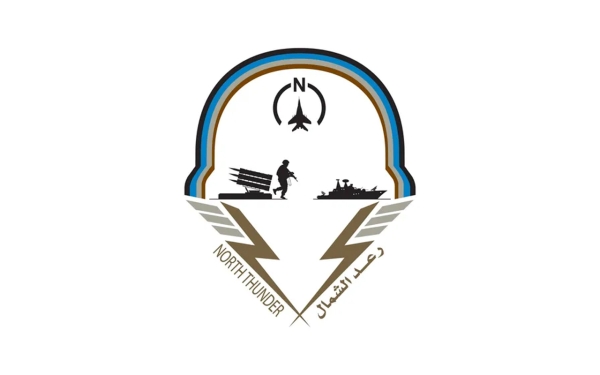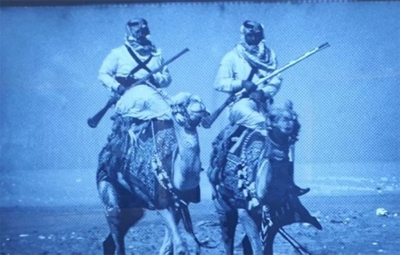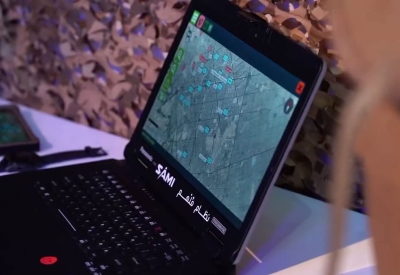

The North Thunder Drill, also known as the North Thunder Military Exercise, is a joint military exercise that ranks among the largest military drills globally, in terms of participating countries, breadth of the exercise area, and advanced military equipment, including weapons and qualitative equipment. It was conducted in Hafr al-Batin Governorate, northeastern the Kingdom of Saudi Arabia, starting on February 27, 2016, with the participation of twenty nations.
The North Thunder Drill focused on preparing forces to counter irregular troops and terrorist groups. Additionally, the forces were trained to shift from traditional operations to low-intensity operations across various conditions, widely dispersed in time and location. The exercise came in the light of rising terrorist threats and regional security and political instability. It reflects the desire of the participating countries to maintain international peace and the region’s stability.
Participating countries in the North Thunder Drill
Twenty troops have participated in North Thunder; namely: the Kingdom of Saudi Arabia, the United Arab Emirates, Bahrain, Oman, Qatar, Kuwait, Jordan, Egypt, Tunisia, Turkey, Morocco, Sudan, Comoros, Djibouti, Mauritania, Chad, Senegal, Pakistan, Malaysia, and the Maldives, in addition to the Peninsula Shield Force.
Significance of the North Thunder Drill
The North Thunder marked a qualitative leap in professional military operations, characterized by the massive scale of forces, diverse weaponry, and high combat capabilities, alongside rapid response efficiency. This contributed to enhancing the combat readiness of the participating military forces, elevating their preparedness to act as a deterrent force.
The drill provided valuable experience in the military system, allowing for engagement with diverse military expertise equipped with qualitative weaponry. Various modern weapons were employed, resulting in numerous gains and further enhancing the capabilities available to the Saudi forces.
The drill highlighted the mutual understanding and agreement among the leaders of the participating countries on priority issues, with combating terrorism at the forefront. This military gathering served as a deterrent message to any threats against regional security.
Weapons used in the North Thunder Drill
The drill included training on and testing the effectiveness of a diverse range of weaponry, such as artillery, air defense formations, naval forces, special operations forces, tanks, infantry, emergency and medical teams, and a mobile field hospital, simulating the highest readiness levels of the twenty participating troops. The exercise utilized advanced military equipment, including missile launch vehicles, troop carriers, tank models, signal corps, Patriot and Hawk missile systems, naval transport units, communication vehicles, armored vehicles, border security units, attack and defense aircraft, helicopters, refueling planes, and airborne operations.
The Final Exercise of the North Thunder Drill
The final exercise of North Thunder took place on March 10, 2016, under the patronage of the Custodian of the Two Holy Mosques, King Salman Bin Abdulaziz Al Saud, with the presence of kings, princes, and presidents of participating countries. It was conducted at the parade ground in King Khalid Military City, Hafr al-Batin. The final exercise Included a series of land, air, and sea confrontation scenarios against hostile targets, with the participation of various forces. It began with a scenario demonstrating the combat capabilities of special forces from some participating countries; namely: paratroopers, special forces units, and naval special security forces. These units simulated strategic strikes on terrorist command and control centers. The exercise also involved data gathering and transmission to the information, surveillance, and assault center. Additionally, a special operations platoon conducted encirclement, containment, and interdiction tasks.
A squadron of Apache attack helicopters participated in the scenario, along with 406 reconnaissance aircraft from army aviation. Then a military parade was carried out to intercept the enemy's attack, and the joint forces' response to it. The accompanying border guards conducted around-the-clock patrols, fixed observation points, and electronic surveillance of land borders; across all border points and between them, with the participation of vertical flights to monitor the land and maritime border. The drill included a scenario simulating the detection of four hostile aircraft near the border. Joint air defense forces responded by engaging in an aerial combat operation. Two hostile aircraft were intercepted within the borders using both long-range and short-range air-to-air missiles, along with machine guns. The remaining two hostile aircraft were intercepted by surface-to-air missiles to destroy them, in a precise battle management tactic demonstrating efficiency and successful coordination between aerial and ground defenses.
Related quizzes
Related articles

